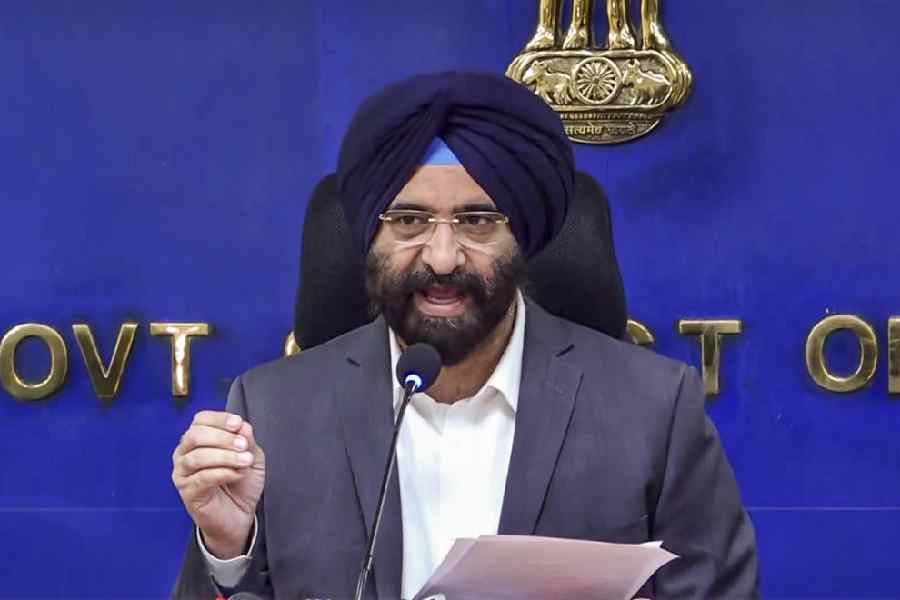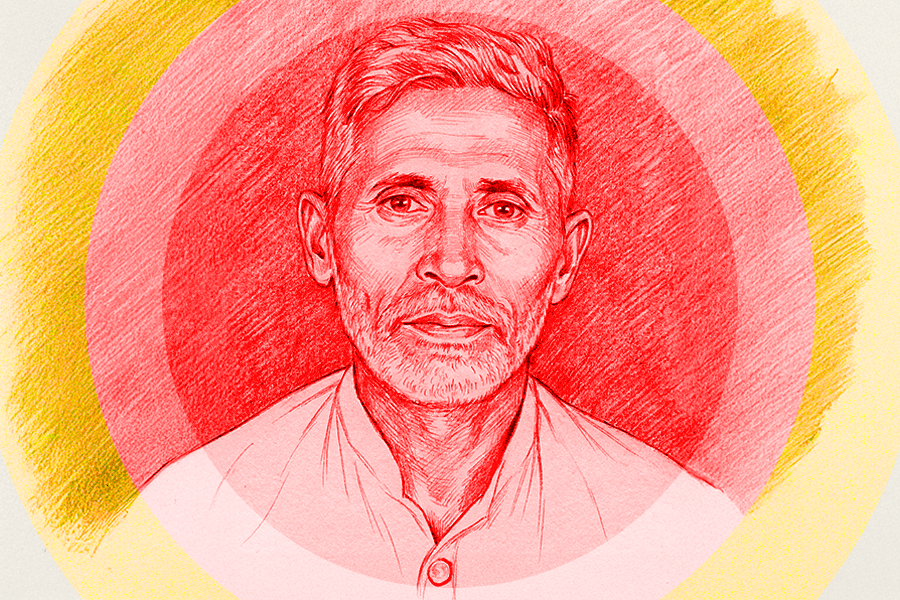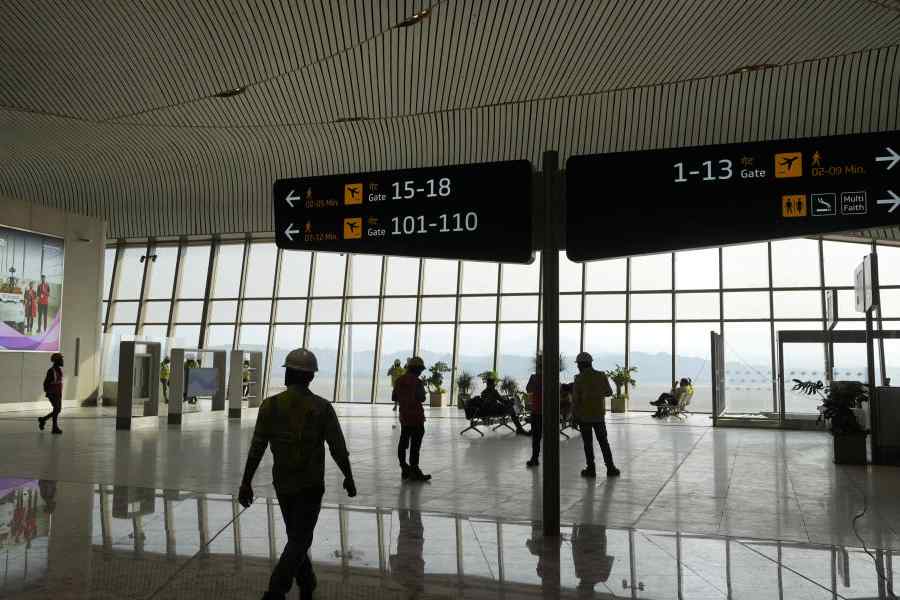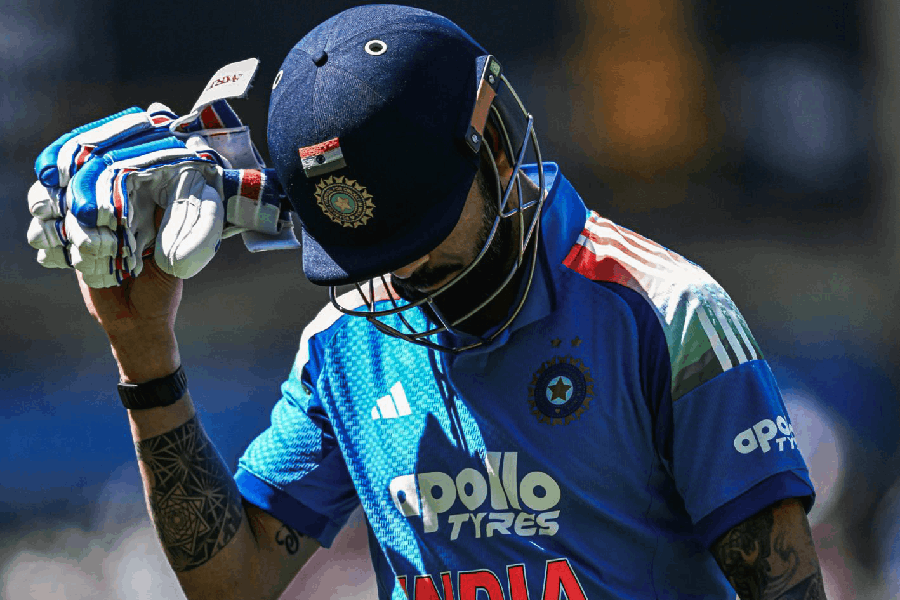
Joan Baez recently sang her farewells at the Beacon Theater but she isn’t bidding audiences goodbye just yet Agencies
The 1960s have been over for a long, long time: temporally, culturally, ideologically. And one by one, its leading musicians are deciding they’ve been on the road long enough. Yes, Bob Dylan and Neil Young, among others, are still barnstorming. But recently, farewell tours by two major figures rooted in the 1960s folk revival came to New York City: Joan Baez, 77, at the Beacon Theater and Paul Simon, 76, at Flushing Meadows Corona Park.
Their careers have intersected. Before a crowd of more than 30,000 people, Simon explained that he wrote Rene and Georgette Magritte With Their Dog After the War — his “oddest song title,” he said — after seeing a photograph with that caption in a book he happened to leaf through while rehearsing with Baez at her California home.
Baez raved over the concert by Simon that she had just seen at Madison Square Garden; then she sang a Simon & Garfunkel hit, The Boxer. Baez’s concert was serene and modest, deferring — as always — to the songs she sang and the ideals they suggested. Simon worked on a larger scale, invoking a world of influences, ideas and details, juxtaposing and often combining introspection with a dance party.
A voice that tells deserving stories
A farewell concert is inevitably a reckoning with an entire career, a last major chance in the spotlight to put a near-lifetime of music into perspective. It took the Grateful Dead five nights in 2015 — two in California, three in Chicago — to encompass the jammy sprawl of their music (and most of the band members were back on the road in various configurations within months). By contrast, set lists from Elton John’s three-year farewell tour, which comes to New York City this month, show a straightforward jukebox of two dozen certified hits. Simon and Baez both chose not to retire with wall-to-wall oldies; their farewell shows revisited past glories but also showed them still engaged, still tinkering.
Baez joked about her “big band”: just a guitarist and keyboardist (Dirk Powell), a percussionist (her son, Gabriel Harris) and sometimes a backup singer (Grace Stumberg), along with her own guitar. They provided a self-effacing backdrop for Baez’s voice. Although it’s no longer her transparent soprano of the 1960s, that voice retains its earnest determination to tell deserving stories and to rally a social conscience.
A folkie to the end, Baez paid tribute to mentors, comrades and sources. She cited Pete Seeger, her sister Mimi (who recorded as Mimi Farina), the Chilean songwriter Violeta Parra, the labour movement commemorated in Joe Hill and, most of all, Bob Dylan, for whom she was an early champion and a girlfriend. His catalogue handily provided farewell songs for the concert; she opened with Don’t Think Twice, It’s All Right. And their mercurial relationship was the subject of Baez’s own Diamonds and Rust, a barbed post-breakup song that put her in the Top 40 in 1975. After she sang Dylan’s A Hard Rain’s A-Gonna Fall, she commented, “That boy’s not much in the way of manners, but he sure could write.”
Still, Baez also looked to songwriters from younger generations to address the present. Her current outlook, she said, is summed up in a song from Antony and the Johnsons, Another World. After she sang about an exploited woman’s revenge in Silver Blade, a ballad written for her by Josh Ritter, she cited the #MeToo movement. And in the night’s most topical song, Zoe Mulford’s The President Sang Amazing Grace, she memorialised the 2015 church murders in Charleston.
Baez’s progressive politics are so well known that she didn’t have to elaborate on them. Instead, she was pointedly playful. When she finished her main set, Jimi Hendrix’s Woodstock version of The Star-Spangled Banner blared from the sound system; she and her bandmates took a knee. She ended the concert with the spiritual Swing Low, Sweet Chariot, greeting mortality with faith and returning to the a cappella purity that brought her 1960s fame. At the end, she sang about angels who were “coming to carry me — you — us — even Donald — home. Amen.”
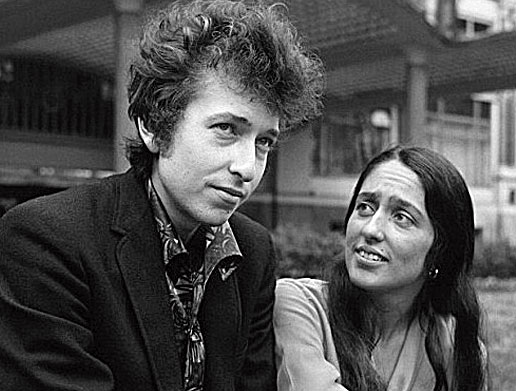

That boy’s not much in the way of manners, but he sure could write
— Joan Baez on Bob Dylan
Strange times, huh? Don’t give up
Simon, who has insisted that he is retiring from touring but not songwriting or performing, chose his farewell venue precisely: near the Unisphere, a symbol of 1960s global optimism, in the largest park in Queens. Simon was born in New Jersey but grew up in Queens, and he was grinning well before he sang Goodbye to Rosie, the queen of Corona, in Me and Julio Down by the Schoolyard, knowing exactly the roar he would get from the audience. After he sang Kodachrome, which belittles “all the crap I learned in high school”, he said, “Take that, Forest Hills High,” before admitting that he “actually had a good time there.”
Simon presided over his last tour date with casual, hometown ease, and he got shouts and applause every time a song mentioned New York City or one of its landmarks. The park is under a flight path; as one plane roared overhead toward a landing, Simon waved it in with a cheerful, “Welcome to New York.” And he ended the concert, and his career on the road, with The Sound of Silence, which carries an admonition rooted in everyday New York City: “The words of the prophets are written on the subway walls/and tenement halls.”
But Simon’s music also portrayed a New York City beyond the old neighbourhood: internationally connected and informed, curious and welcoming, culturally intertwined and restlessly exploratory and, often, a place of uneasy solitude amid the hyperactivity. The upbeat tunes of songs like You Can Call Me Al and Kodachrome carry tidings of desperation and disillusionment; driven by flamenco handclaps, the snappy Wristband, from Simon’s 2016 album Stranger to Stranger, warns about the rising anger of people who feel shut out.
Simon has always steered clear of direct political messages, determined not to be didactic. He introduced American Tune — which was released in 1973 and muses, “When I think of the road we’re travelling on/I wonder what’s gone wrong” — by simply saying, “Strange times, huh? Don’t give up.”
The rhythms were both international and idiosyncratic, with grooves that invoked Jamaica, India, South Africa, Brazil, Nuyorican salsa and Louisiana zydeco (That Was Your Mother, which had Simon showing off some footwork of his own).
His omnivorous 14-member band handled a profusion of instruments — button accordion, oboe, Brazilian cuica — and a remarkable spectrum of idioms and fusions.
Farewells in pop tend to be final until they’re not; ask Phish or the Eagles. Baez’s tour extends into next year. And with these concerts as closing statements, Baez and Simon suggested that even if they leave the road behind, their work isn’t finished.
Farewell tours of 2018
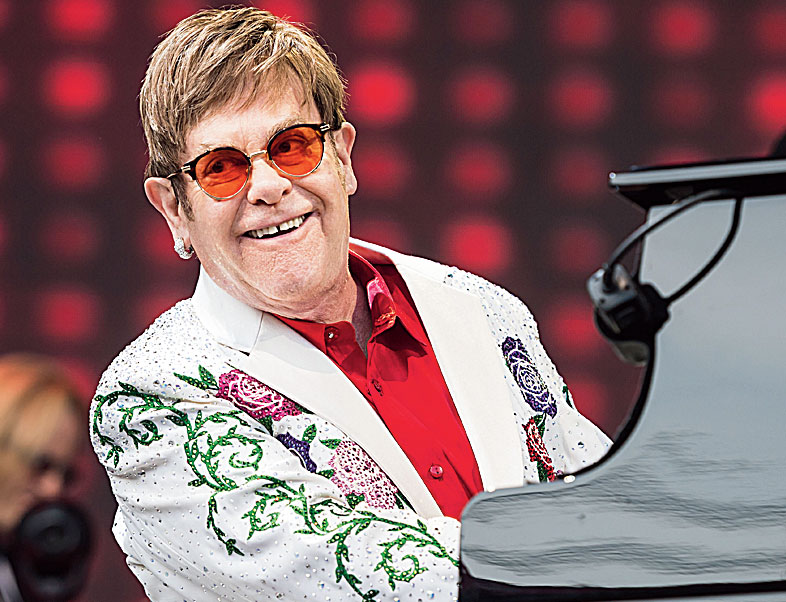
Elton John: The man is 71 and has got two young kids in school, yet he has toured like few other musician in the past couple of decades. His Farewell Yellow Brick Road tour is his final trek. Agencies

Ozzy Osbourne: No More Tours II is his way to end touring. “I just need to slow it down a little. I enjoy being a grandfather. I don’t want to go through another generation of Osbournes without seeing them grow up,” the singer has told Rolling Stone. Agencies
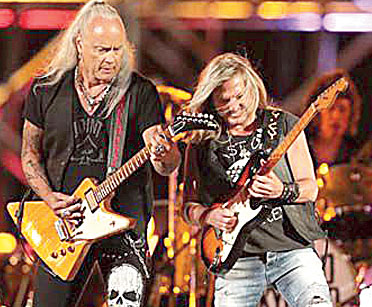
Lynyrd Skynyrd: The Last of the Street Survivors Farewell Tour will be the iconic band’s final tour. “It’s hard to imagine, after all these years, the band that Ronnie Van Zant, Allen Collins and myself started back in Jacksonville, would resonate for this long and to so many generations of fans. I’m certain they are looking down from above, amazed that the music has touched so many,” band member Gary Rossington has said in a statement. Agencies


